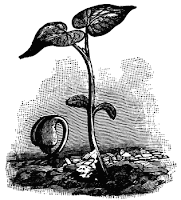I realize that this is going to push me on wrong side of the angels, but really, folks, take a good hard look at the wheels
before jumping on any bandwagon.
Even a stopped clock is right twice a year.
Even a stopped clock is right twice a year.
Yep, a reprint, but New Jersey's under attack by do-gooding, mean-welling folk who need to find a new hobby,

A foreign substance is introduced into our precious bodily fluids without the knowledge of the individual. Certainly without any choice. That's the way your hard-core Commie works.
General Jack D. Ripper
Dr. Strangelove or: How I Learned to Stop Worrying and Love the Bomb
Ah, March madness.
I recently suggested that beer in moderation may be better for my health than milk. My first responder, Mr. Anonymous, lumped me together with "the anti-vaxxers, & anti-fluorides."
OK, I confess--I oppose fluoridation of my local water supplies.
Please read that carefully. I am not opposed to the use of medical grade fluoride applied by a dentist. I am not opposed to prescribing medical grade fluoride for use by a child so long as an adult in the home can carefully follow directions.
I do, however, oppose fluoridation of the water that comes out of my tap, especially if the fluoride used comes from industrial waste.
In regard to the use of fluosilicic (fluorosilicic) acid as a source of fluoride for fluoridation, this agency regards such use as an ideal environmental solution to a long-standing problem. By recovering by-product fluosilicic acid from fertilizer manufacturing, water and air pollution are minimized, and water utilities have a low-cost source of fluoride available to them.
Rebecca Hanmer, 1983
Deputy Assistant Administrator for Water, EPA, back then
I'm sure Ms. Hanmer is a decent person. She's the former director of the Chesapeake Bay Program, she's won the President’s Distinguished Federal Executive Award, and she's a wonderful advocate for clean water.
Still, she advocated putting industrial waste into my water supply. That's the way it was done a quarter century ago. That's the way it's done today.
Florida has a few lucrative industries, and not all of them are Mickey Mouse. Florida produces tons of phosphate fertilizer. It also produces tons of hazardous waste. Fluorosilicic acid, a mixture of waste products from pollution scrubbers used during the processing of phosphate fertilizer, is shipped all over the country.*
Yes, it's diluted over 100,000 times when used for fluoridation. Yes, it helps prevent dental cavities.
No, I don't want my government deliberately dumping toxic waste into my water supply.

No, really.
And it's not just because I own a tinfoil hat.
*Yes, you can buy this stuff--Lucier Chemical Industries will sell it to your town. Yes, it's Lucier, not Lucifer.









































